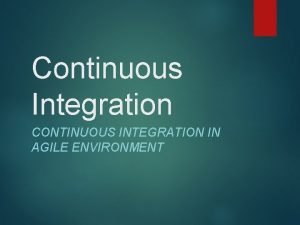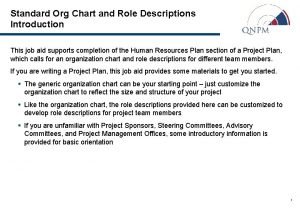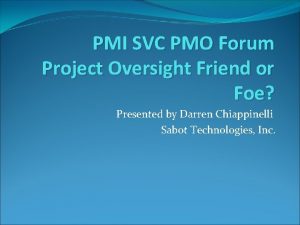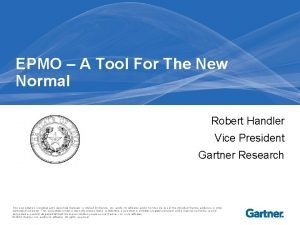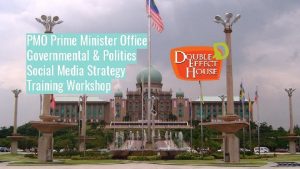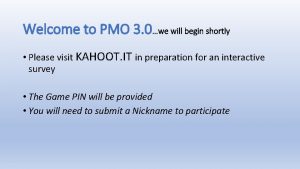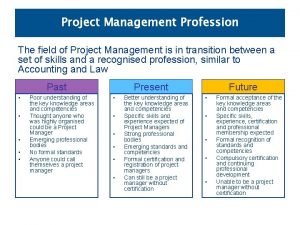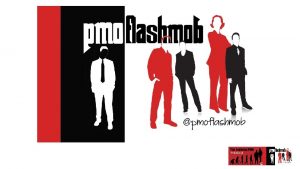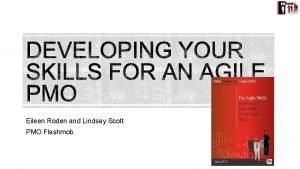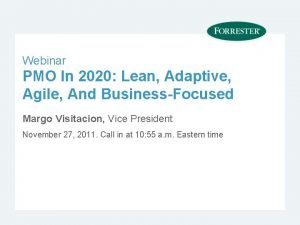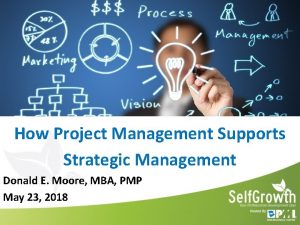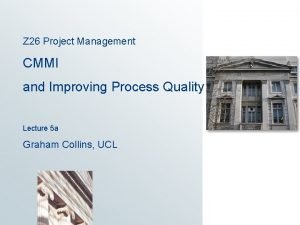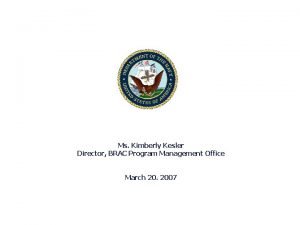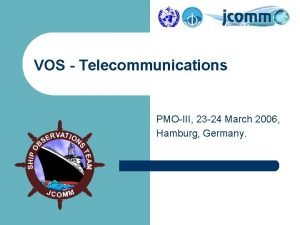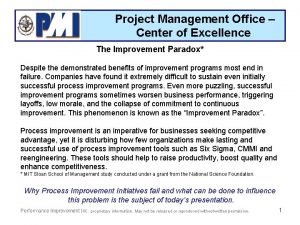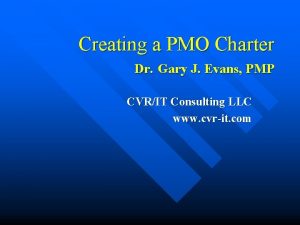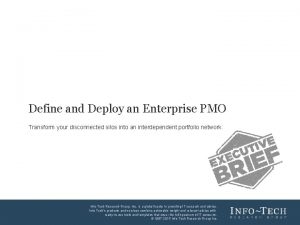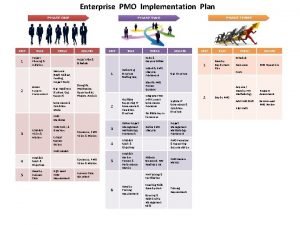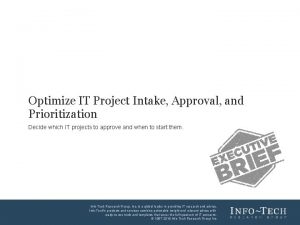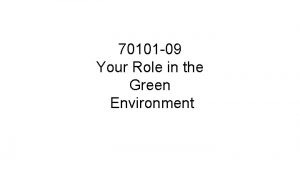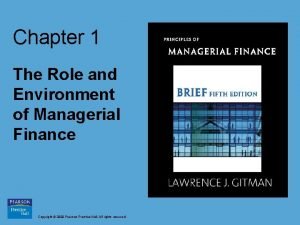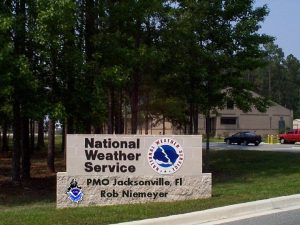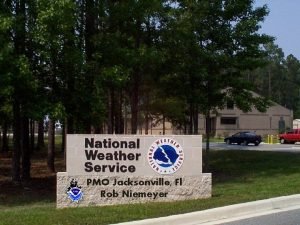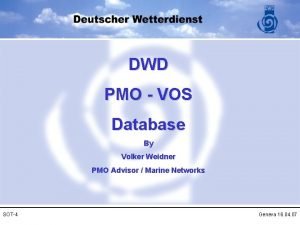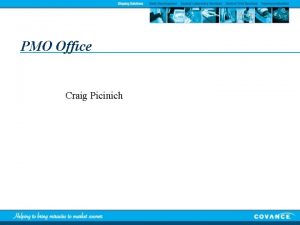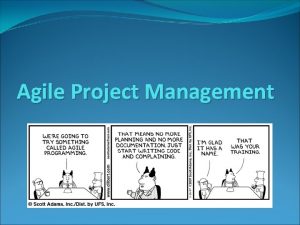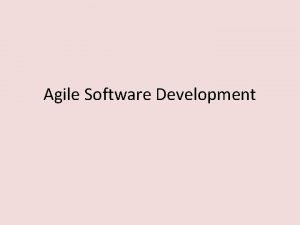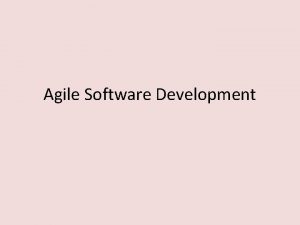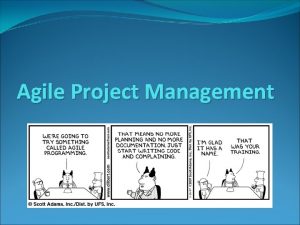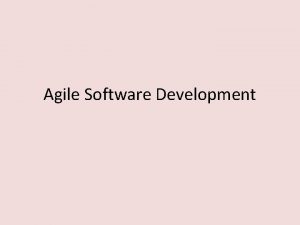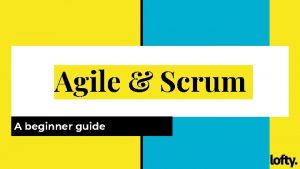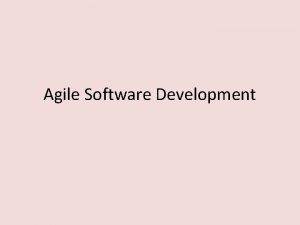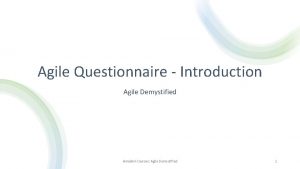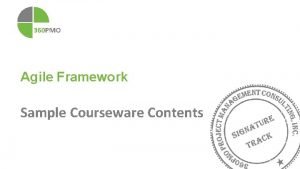The PMO Role in an Agile Environment Steve





































- Slides: 37

The PMO Role in an Agile Environment Steve Messenger

Steve Messenger www. dsdm. org 2

3 DSDM • DSDM Consortium not for Profit • Created Collaboratively by practitioners for practitioners • Mission: “To promote best practise in Agile Project and Programme Management and Delivery” • • Used in in business areas, not just IT Only agile method covering full project/programme lifecycle developed from an agile point of view www. dsdm. org

Steve Messenger Herald Associates Limited agileherald. com • Agile PM Certified Trainer • Chairman, DSDM Consortium • DSDM Advanced Practitioner • DSDM Certified Trainer • DSDM Certified Examiner • Agile Foundation certified examiner • Agile Advanced Practitioner Certified Examiner • Co-Author DSDM Agile Programme Management • Training, Coaching and Consultancy • DSDM Early Adopter – Boston Globe • Director, Herald Associates Limited • Over 30 years experience in Software, IT and Project Management • PRINCE 2 accredited • Industries worked in –Pharmaceutical –Newspaper –Control Systems –Insurance (Lloyds of London) –Local Government –Hydrographic – Electronic Sea Charts 4

Introduction • Brief background • Why DSDM? www. dsdm. org 5

What Agile Is • A generic description of a style of working • AGILE MANIFESTO – Flexible – Close to the “customer” throughout – Delivery is early and frequent – Final solution meets real business need – Decisions about detail deferred until last responsible moment – Decisions delegated to lowest possible level Individuals and interactions over processes and tools Customer collaboration over contract negotiation Business over comprehensive Working value software comprehensive documentation Responding to change over following a plan

What Agile Is Not • Faster than “traditional” projects • A planning and/or documentation free zone • A means of avoiding governance and management controls

Governance • The right things are done - 3 P planning • Things are done right - Features Budgets Time Resource Process and Quality • All stakeholders satisfied www. dsdm. org

The Corporate Chasm Starting a Project Mgmt. Org. Directing a Project Controlling a Stage Managing Stage Boundaries Ending a Project Business Case Controls Change Control Prince 2, PMI, etc. Management Delivery / development Refactoring Sustainable Pace Continuous Integration Pair Programming Sprint Collective Code Ownership Test-driven Development Simple Design Coding Standards XP, Scrum, etc.

Some Definitions • The P in Agile PMO stands for Projects • Three scenarios where Agile PMOs are needed: 1. Agile approaches are the norm – the PMO is new 2. The PMO is being pushed by the use of Agile approaches 3. The PMO is promoting Agile approaches www. dsdm. org

Questions to answer PMO specialists ask: 1. How do we cope with less precise business cases? 2. How do we prioritise projects against each other if you can’t tell in advance what the benefits are? 3. How can this work in our regulated industry? 4. How do we recognise and report that an Agile project is going wrong? 5. How do we align seemingly ad hoc Agile project reporting with our time-based governance? We would add: 6. How could we make the life of Agile project easier and quicker while also serving the needs of the organisation? www. dsdm. org

Some answers to… 1. How do we cope with less precise business cases? 2. How do we prioritise projects against each other if you can’t tell in advance what the benefits are? 3. How can this work in our regulated industry? 4. How do we recognise and report that an Agile project is going wrong? 5. How do we align seemingly ad hoc Agile project reporting with our time-based governance? 6. How could we make the life of Agile projects easier and quicker while also serving the needs of the organisation? www. dsdm. org

Gated Review Processes Typical Gates 1. Permission to investigate an idea 2. Permission to build a Business Case 3. Business Case approval – go ahead 4. Permission to test deliverables 5. Permission to deliver 6. Project closure

Agile Programme Gates

Benefits Realisation – Each interim state is consistent – Move towards envisaged final state – Enable capabilities and realise benefits – Benefits monitored throughout ©Dynamic Systems Development Method Limited 2014

Annual vs. Agile Portfolio Management Factor Basis for funding decisions Annual Agile Capacity for change The known state of the organisation at the The known state of the organisation at any end of the financial year and the point during the financial year prediction for the next year Limited by the allocated budget Enabled through continuous monitoring Commitment to spend “Once and for all” decisions made annually Discretionary funding decisions enabled throughout the year Use of funding Potential for holding back on using resources early in the financial year, because “they might be needed later” Reported at fixed points, e. g. quarterly – leading to disaster recovery Exceeding budgets Benefits delivery Risk assessment www. dsdm. org Funding used to the full when allocated to move the organisation forward Reported at the time when it becomes apparent - enabling better control of financial risks May well be aligned to the annual cycle for Aligned to the ability to deliver ease of measurement and overall governance Based on the known state at the start of Based on the state of the portfolio in its the financial year incremental delivery

Some answers to… 1. How do we cope with less precise business cases? 2. How do we prioritise projects against each other if you can’t tell in advance what the benefits are? 3. How can this work in our regulated industry? 4. How do we recognise and report that an Agile project is going wrong? 5. How do we align seemingly ad hoc Agile project reporting with our time-based governance? 6. How could we make the life of Agile projects easier and quicker while also serving the needs of the organisation? www. dsdm. org

Portfolio Prioritisation • Portfolio-level Mo. SCo. W rules – Must have – at the core of business change – Should have – would be must have if there were no issues with resourcing, etc. (will be a Must Have soon!) – Could have – icing on the organisational cake – Won’t have this time – accepted as valid Business Cases but for later consideration • Assessing individual project’s suitability to Agile approaches www. dsdm. org

Some answers to… 1. How do we cope with less precise business cases? 2. How do we prioritise projects against each other if you can’t tell in advance what the benefits are? 3. How can this work in our regulated industry? 4. How do we recognise and report that an Agile project is going wrong? 5. How do we align seemingly ad hoc Agile project reporting with our time-based governance? 6. How could we make the life of Agile projects easier and quicker while also serving the needs of the organisation? www. dsdm. org

Change Control of Requirements - 1 Rqmts www. dsdm. org

Change Control of Requirements - 2 • Control changes to the breadth of requirements – not the depth • Consider how to achieve – Reduction of current procedures – Elimination of as many approvals as possible – The lightest possible Change Control Form – Stakeholders involved throughout the project • Monitor external dependencies www. dsdm. org

Some answers to… 1. How do we cope with less precise business cases? 2. How do we prioritise projects against each other if you can’t tell in advance what the benefits are? 3. How can this work in our regulated industry? 4. How do we recognise and report that an Agile project is going wrong? 5. How do we align seemingly ad hoc Agile project reporting with our time-based governance? 6. How could we make the life of Agile projects easier and quicker while also serving the needs of the organisation? www. dsdm. org

KPIs for Agile work • Velocity – one team’s productivity • Cycle time – from customer request received to solution delivered • Boomerangs – things that bounce back from delivered solutions • Customer involvement – time spent working on the project • Customer satisfaction – captured during the project, e. g. at Timebox Reviews www. dsdm. org

Quality Management • PMO needs to ascertain how the Agile quality principles below fit with corporate procedures, etc. – Excellent requirements evolved through facilitated workshops, etc. – Fitness for business purpose through continuous, consistent and focused customer involvement – Continuous review of the evolving solution and supporting documentation – Continuous validation and verification of the evolving and delivered solution through testing – Preservation of built-in quality through rigorous configuration management www. dsdm. org

Some answers to… 1. How do we cope with less precise business cases? 2. How do we prioritise projects against each other if you can’t tell in advance what the benefits are? 3. How can this work in our regulated industry? 4. How do we recognise and report that an Agile project is going wrong? 5. How do we align seemingly ad hoc Agile project reporting with our time-based governance? 6. How could we make the life of Agile projects easier and quicker while also serving the needs of the organisation? www. dsdm. org

Project Planning and Monitoring • Gantt charts only go so far • Need visible statement of what each timebox will deliver (using Mo. SCo. W rules) • Project information is on walls, whiteboards, cards… • PMO can track what has/has not been delivered • Tools used to store information on walls can help the PMO – but should not replace the walls www. dsdm. org

Planning Horizons • Programme Horizon – Plan in Outline – Define potential tranches – Potential Capabilities / Benefits • Tranche Horizon – Detailed for this tranche – Projects and activities – Not detail of projects • Project Horizon – Outline for whole project – Detailed for this increment – Not detail of timeboxes, later increments www. dsdm. org

PMO Support for Estimating: points to consider • Historic data must be from Agile projects because – Project phases/activities will be different (especially evolutionary development) – Length of time on tasks different because of different communications – Level of customer involvement will be different (undertaking tasks not traditionally included in project plans) • The horizon for estimates is much nearer than traditionally • The accuracy of estimates improves as the detailed requirements emerge www. dsdm. org

Increasing accuracy of estimates

Some answers to… 1. How do we cope with less precise business cases? 2. How do we prioritise projects against each other if you can’t tell in advance what the benefits are? 3. How can this work in our regulated industry? 4. How do we recognise and report that an Agile project is going wrong? 5. How do we align seemingly ad hoc Agile project reporting with our time-based governance? 6. How could we make the life of Agile projects easier and quicker while also serving the www. dsdm. org needs of the organisation?

Resource Management • Fine-tuned processes for acquiring resources swiftly (not just people) • Efficient HR systems (timely training, keeping skills up to date, employing contractors, etc. ) • Avoid context-switching for scarce human resource • Include appropriate levels of customer participation in human resource plans www. dsdm. org

Stakeholder Engagement • PMO BAU, e. g. monitoring which projects/programmes dealing with whom • PMO not part of the close engagement • Potential PMO activities: – Supporting efficient procedures for meeting rooms – Briefing stakeholders – Workshop kits – Facilitation www. dsdm. org

Standards for methods and tools • Tailoring guidelines – processes, products and roles • Pocketbook lists criteria for tools to be selected for use in Agile projects www. dsdm. org

Knowledge management • Agile knowledge may not be documented so remains local • PMO could – Manage a central Agile library or wiki or… – Provide fast-track project mobilisation service – Manage a pool of Agile coaches – Facilitate knowledge sharing, e. g. through COPs, brown-bag lunches, … www. dsdm. org

www. dsdm. org

Contact Information sjm@agileherald. com +44 (0) 770 333 8034 @agileherald uk. linkedin. com/in/sjmessenger http: //www. agileherald. com http: //www. dsdm. org

www. dsdm. org
 Pmo in agile environment
Pmo in agile environment Steve jobs steve wozniak ronald wayne
Steve jobs steve wozniak ronald wayne Continuous integration environment agile
Continuous integration environment agile Environment of business finance
Environment of business finance Standard org chart
Standard org chart Pmo forum
Pmo forum Akv-matrix
Akv-matrix Myasset tag
Myasset tag Whats pmo
Whats pmo Roles y funciones de una pmo
Roles y funciones de una pmo Pmo arboned
Pmo arboned Governmentary
Governmentary Pmo 3
Pmo 3 Pmo skills and competencies
Pmo skills and competencies Gartner pmo best practices
Gartner pmo best practices Pmo flashmob
Pmo flashmob Adaptive pmo
Adaptive pmo Throughput model pmo
Throughput model pmo Certificação pmo-cp
Certificação pmo-cp Pmo vision statement examples
Pmo vision statement examples Conclusiones de software
Conclusiones de software Cmmi project management
Cmmi project management Brac pmo
Brac pmo Pmo
Pmo Project management center of excellence
Project management center of excellence Pmo charter
Pmo charter Enterprise pmo meaning
Enterprise pmo meaning Enterprise implementation plan
Enterprise implementation plan Organigrama de una pmo
Organigrama de una pmo Project intake process presentation
Project intake process presentation Your role in the green environment
Your role in the green environment The role and environment of managerial finance
The role and environment of managerial finance Lothar krappmann
Lothar krappmann Statuses and their related roles determine the structure
Statuses and their related roles determine the structure Azure worker role
Azure worker role Tư thế worms-breton
Tư thế worms-breton ưu thế lai là gì
ưu thế lai là gì Tư thế ngồi viết
Tư thế ngồi viết


